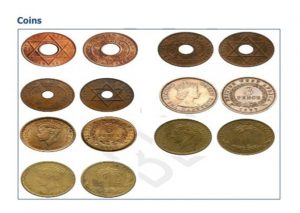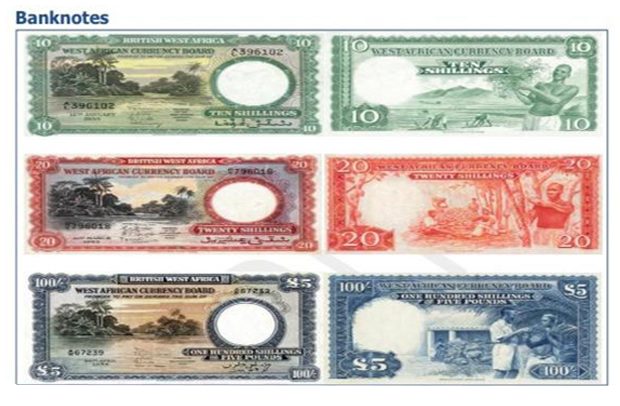Background
History has it that prior to the declaration of independence on March 6, 1957 from the British colonial powers by Dr. Kwame Nkrumah; the Gold Coast had already laid a solid foundation for economic, social and governance take off.
There was the need to establish a central bank to give a ‘true meaning’ to political independence. Consequently, the Bank of Ghana was established on the eve of Ghana’s independence, March 4, 1957 and mandated to issue and redeem bank notes and coins.
Prior to this, the West African Currency Board (WACB), which was constituted in 1912 by the British Colonial Administration, issued and circulated the West African Pound (£WA) in the Gold Coast and the other Anglophone countries in West Africa, with the exception of Liberia.
After independence, the West African pound, shillings and pence remained the units of currency until the first currency reforms in July 1958 when the Bank of Ghana issued the Ghana Pound (£G) as the main currency to further consolidate the political independence.
Another currency reform took place in 1965, as Ghana adopted the widely accepted decimal system for its new currency issue, the ‘cedi’. The word ‘cedi’ was derived from the Akan word “sedie” meaning cowry shell which was one of the commodities widely used as a medium of exchange (currency) for transactions prior to the colonial era.
The third and fourth currency reforms in 1967 and 1972 respectively were all undertaken after a military coup d’état, reflecting the political and economic uncertainty during those periods.
Subsequently, in 1979 another currency reform took effect, where the cedi was rediscounted mainly as a tool to control liquidity. One common feature of the aforementioned reforms was the use of the local currency as a monetary policy tool. However, the implementation process had unintended consequences as some citizens lost money through the demonetization and discounting of the currency.
Unlike the various currency reforms, the re-denomination undertaken in 2007 was not done as part of a stabilization process, but rather to reflect stability, alongside a strong commitment to good governance.
Ghana has witnessed several currency reforms since 1912 to date, and as the country prepares to mark its 66th Independence Day on March 6, 2023, the Bank deems it appropriate to catalogue the various currency issuances over the past sixty-six years to commemorate the occasion.
Currency at Independence
The West African pound (£WA), shillings, and pence circulated in the Gold Coast, Nigeria, Sierra Leone and The Gambia prior to Ghana’s independence. The immediate post-independence Ghana continued to use this colonial currency until the first currency reform in July 1958. The West African currency had 10 Shillings, 20 Shillings, 1 and 5 Pound banknotes and had quarter Penny (Farthing), half Penny, 1 Penny, 3, 6, 1, and 2 Shillings (Florins) as coins.
First Currency Reforms: Ghana Pound
After independence, the West African Pound was regarded as a vestige of British colonialism that had to be changed. Consequently, the Bank introduced the first set of currency called the Ghana Pounds, Shillings and Pence to replace the West African Shillings and Pence in July 1958 with the following denominations; 10 Shillings, 1 Pound, 5 Pounds, and 1000 Pounds (for interbank transactions) were noted as banknotes where as half Pence, 1 Penny, 3 Pence, 1 Shilling, and 2 Shillings were used as coins.
Second Currency Reforms: Cedi (₵) and Pesewa (P)
Barely three years after the introduction of the Ghana pounds, shillings and pence, the government initiated a move to adopt the widely accepted decimal currency system.
The Kessels Committee was subsequently set up to design a road map for the migration. The proposed banknotes were named the “cedi” and the corresponding coin was the “pesewa” and all the banknotes and coins bore the portrait of the first President of the Republic of Ghana, Dr. Kwame Nkrumah.
In July 1965, the various denominations below were issued. The banknotes were 1, 5, 10, 50, 100, and 1,000 Cedis with the coins being 5, 10, 25, and 50 Pesewas.
The 1 Cedi was equivalent to 8 Shillings and 4 Pence (8s 4p) whiles 100 Pesewas was equal to 1 Cedi. The 1 Penny coin was allowed to circulate for a while alongside the 1 Pesewa.
Third Currency Reforms: The New Cedi (N₵)
The overthrow of the Convention Peoples’ Party in 1966 led to the decision to replace the existing currency, seemingly to do away with the portrait of Dr. Kwame Nkrumah on the currency.
In February 1967, a new currency was issued without the portrait of the former president and the name of the new banknotes was slightly changed to the ‘New cedi (N¢)’, but the ‘pesewa’ was maintained for the new coins. The denominations introduced in February 1967 consisted of; 1, 5, and 10 Cedi banknotes alongside half a Pesewa, 1 Pesewa, 2½ Pesewas, 5 Pesewas, 10 Pesewas, and 20 Pesewas.
1 new cedi was equivalent to 1 cedi and twenty pesewas of the old cedi (N₵1 = ₵1.20) The old and new cedi notes and coins circulated simultaneously for three months before old currencies were demonetized in May 1967.
Fourth Currency Reforms: The Cedi (₵)
The fourth currency issue occurred in February 1972 after a military coup that led to the overthrow of the government of the Second Republic led by President Edward Akufo-Addo and Prime Minister Dr. Kofi Abrefa Busia.
A Committee was formed under the chairmanship of Mr. Frimpong-Ansah, then Governor of the Bank of Ghana, to oversee the re-issue of the cedi without the N₵ symbol. Subsequently, the newly introduced banknotes became simply known as the cedi with the denominations 1, 2, 5, and 10 Cedis being banknotes.
Other higher denominations of the cedi with different portraits were introduced between 1973 and February 1979.
Fifth Currency Reforms: Demonetization
On March 9, 1979, the Government announced the introduction of new cedi notes to replace the existing ones at a discount of 30 per cent for amounts up to ¢5,000 and 50 per cent discount for amounts in excess of ¢5,000.
The old currency was therefore demonetized and the ¢50 banknotes were subsequently confiscated from the system. However, cash already in commercial bank accounts were neither confiscated nor discounted. The newly introduced denominations were 1, 2, 5, 10, and 20 cedis alongside 50 Pesewas and the 1 cedi coin.
Sixth Currency Reforms: High Denominations
From 1982 to 2003, some currency reforms occurred reflecting the high inflation environment. First, in 1982, the Bank of Ghana issued a new cedi currency in same denominations but with new designs, colours and enhanced security specifications, to replace the 1979 issue.
The notable aspect of the 1982 issue was the re-introduction of the ¢50 denomination, which had earlier been confiscated. In 1984, ¢100 and ¢200 note were introduced and in 1986, the Bank issued the ¢500 notes, and eventually replaced and phased out the lower denominations of ¢1, ¢5, ¢10 and ¢20 notes with coins. By 1986, the structure of denominations had changed to 50, 100, 200, and 500 Cedis being banknotes with 1,5,10, and 20 Cedis as coins.
In 1991, the Bank of Ghana introduced the ¢1000 banknote and converted the ¢50 and ¢100 banknotes into coins.
The central bank also introduced the ¢2000 and ¢5000 banknotes in 1994 and further converted ¢500 and ¢200 to coins. In 2003, the Bank introduced the ¢10,000 and ¢20,000 into circulation, making the ¢20,000 the highest cedi denomination. The ¢20, ¢10, ¢5 and ¢1 coins were subsequently phased out. The currency structure was then 1000, 2000, 5000, 10000, and 20000 Cedis being banknotes with 50,100,200, and 500 cedis as coins.



